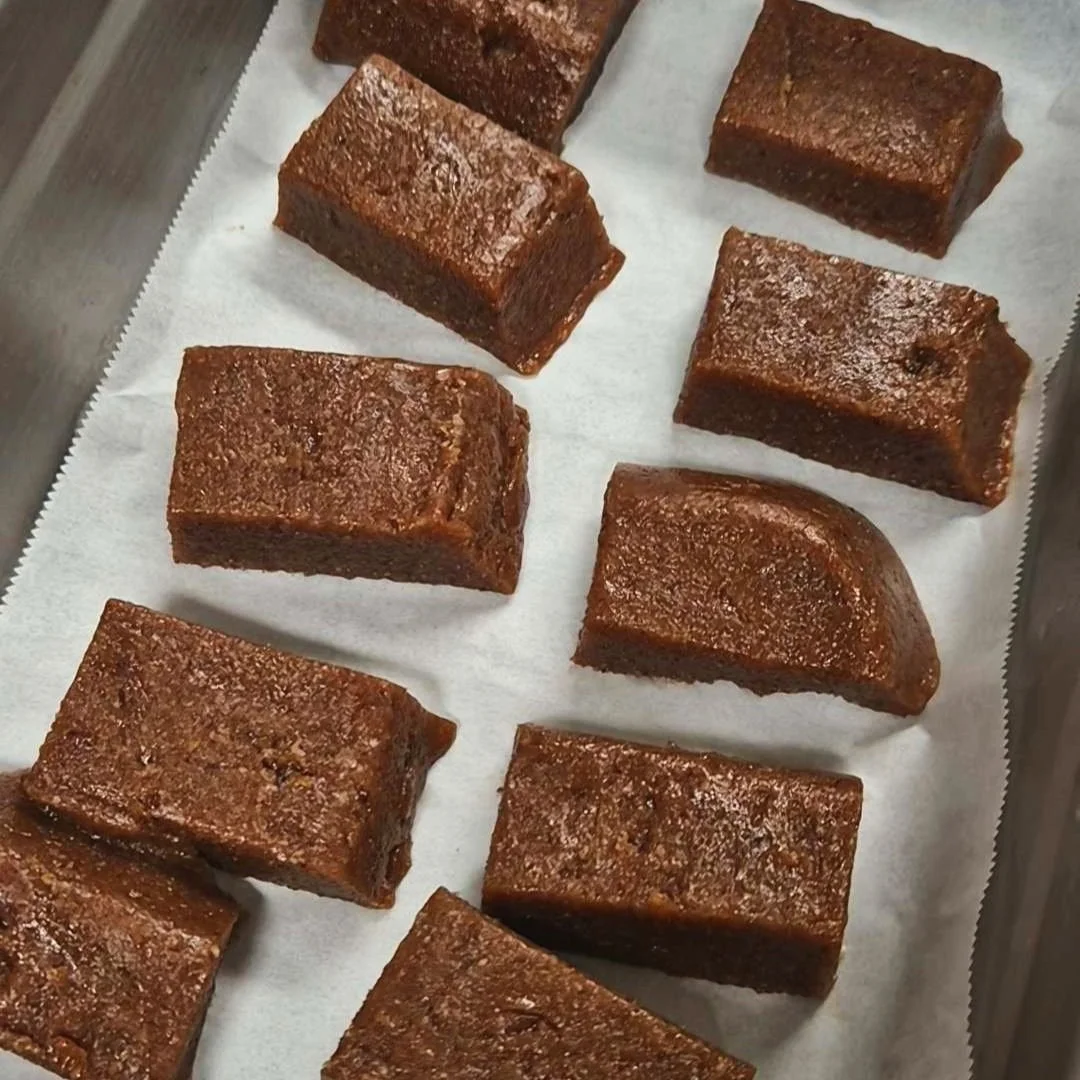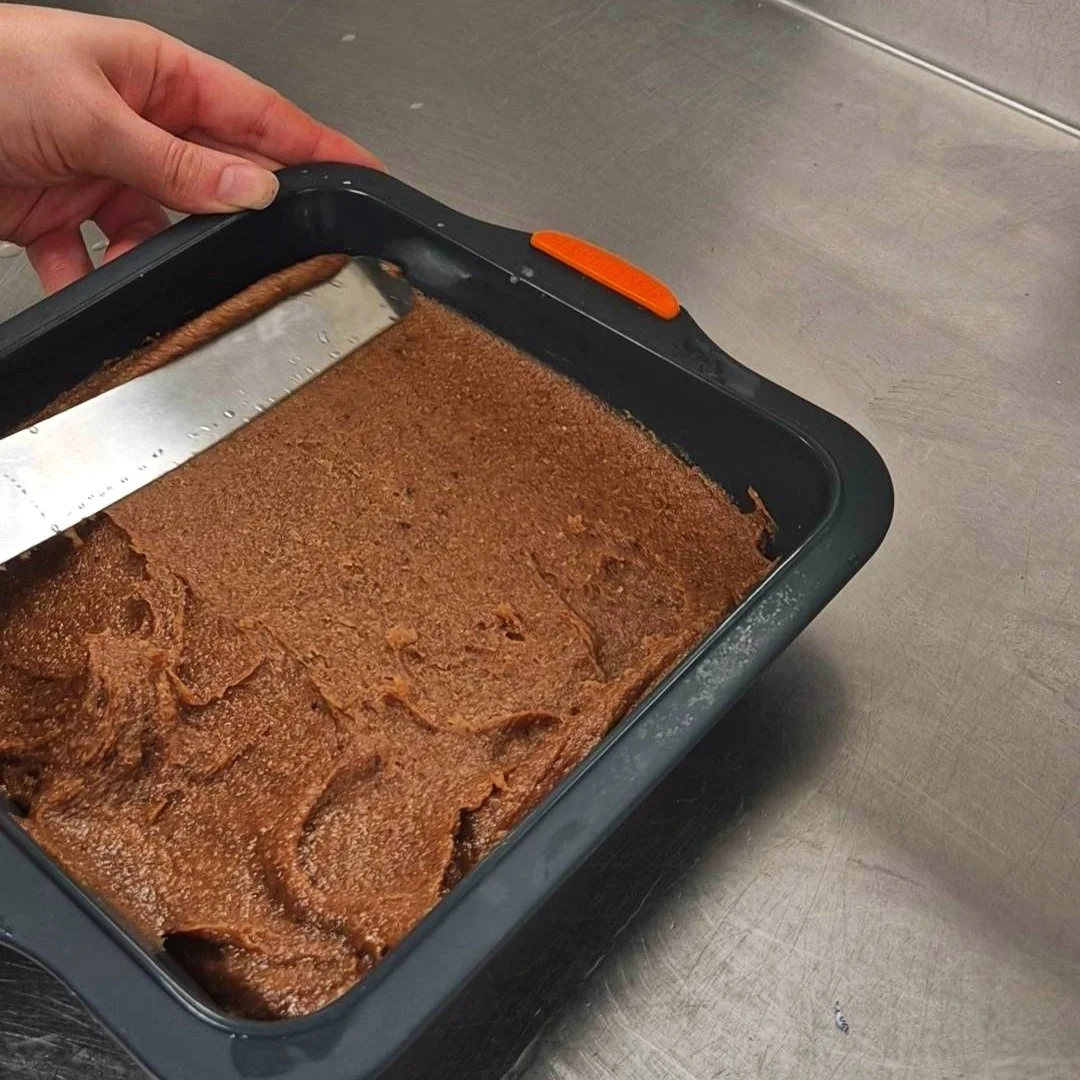Tahini Fudge for Postpartum and C-Section Recovery
This nutrient-dense tahini fudge is more than just a delicious treat, it’s a powerhouse of ingredients specifically chosen to support new mums during the postpartum period. Whether you're breastfeeding, recovering from a C-section, or simply seeking to replenish your body's nutrients after childbirth, this recipe offers both flavour and function.
Why Each Ingredient Supports Postpartum Recovery
Tahini (Sesame Seed Paste)
Tahini is rich in calcium and zinc, essential minerals for postpartum healing. Calcium supports bone health and muscle function, crucial after childbirth, while zinc plays a vital role in tissue repair and immune function. Additionally, sesame seeds have been traditionally used to support lactation (Namiki, 2007).
Raisins
Raisins are a natural source of iron, which is vital for replenishing iron stores depleted during childbirth. Adequate iron intake helps prevent postpartum anaemia, reducing fatigue and supporting overall recovery (Healthgrades, n.d.).
Oats
Oats are known as a galactagogue, a food that may help increase breast milk production. They are also high in fibre, aiding digestion and providing sustained energy (Brodribb, 2018).
Flaxseed Meal
Flaxseeds are packed with omega-3 fatty acids and fibre. Omega-3s support brain health and may help reduce inflammation, while fibre aids in digestion and helps regulate blood sugar levels (Goyal et al., 2014).
Collagen Powder (Optional)
Adding collagen powder can support wound healing, which is particularly beneficial for mums recovering from a C-section. Collagen aids in tissue repair and may improve skin elasticity (Chattopadhyay et al., 2014).
Cinnamon & Ginger
These warming spices not only add flavour but also support digestion and circulation. Ginger has anti-inflammatory properties, while cinnamon can help regulate blood sugar levels (Zeng et al., 2015).
Tahini Fudge
Makes: 24 squares
Ingredients:
270g (1 cup) tahini
250g (1 cup) raisins
90g (1 cup) oats
2 tbsp flaxseed meal
1 tsp cinnamon
½ tsp ground ginger
50ml water
¼ tsp salt
1–2 scoops collagen powder (optional)
Method:
Place all ingredients into a food processor or high-speed blender.
Blend until the mixture is smooth and sticky, which may take 5–10 minutes depending on your appliance.
Transfer the mixture into a lined tray, dish, or silicone mould.
Refrigerate overnight to set.
Once set, slice into 24 squares.
Store in the fridge or freezer and enjoy as needed.
This tahini fudge is a convenient and nourishing snack for new mums, providing essential nutrients to support recovery and breastfeeding. It's easy to prepare and can be stored for quick access during those busy postpartum days.
Curious about how tahini and sesame seeds can support your menstrual cycle or help balance hormones? Learn more in my post on seed cycling and in my free downloadable seed cycling guide.
References
Brodribb, W. (2018). ABM Clinical Protocol #9: Use of galactogogues in initiating or augmenting maternal milk production, Second Revision. Breastfeeding Medicine, 13(5), 307–314. https://doi.org/10.1089/bfm.2018.29002.wbr
Chattopadhyay, S., Raines, A. L., & Pappu, A. (2014). Collagen-based biomaterials for wound healing. Journal of Biomedical Materials Research Part A, 102(8), 2613–2624. https://doi.org/10.1002/jbm.a.34957
Goyal, A., Sharma, V., Upadhyay, N., Gill, S., & Sihag, M. (2014). Flax and flaxseed oil: An ancient medicine & modern functional food. Journal of Food Science and Technology, 51(9), 1633–1653. https://doi.org/10.1007/s13197-013-1247-9
Healthgrades. (n.d.). What You Should Know About Postpartum Iron Deficiency. Retrieved from https://www.healthgrades.com/right-care/pregnancy/what-you-should-know-about-postpartum-iron-deficiency
Namiki, M. (2007). Nutraceutical functions of sesame: A review. Critical Reviews in Food Science and Nutrition, 47(7), 651–673. https://doi.org/10.1080/10408390600919114
Zeng, Y., Li, Y., Yang, J., Pu, X., Du, J., Yang, X., & Yang, T. (2015). Therapeutic role of functional components in alliums for preventive chronic disease in human being. Evidence-Based Complementary and Alternative Medicine, 2015, 1–13. https://doi.org/10.1155/2015/940616


